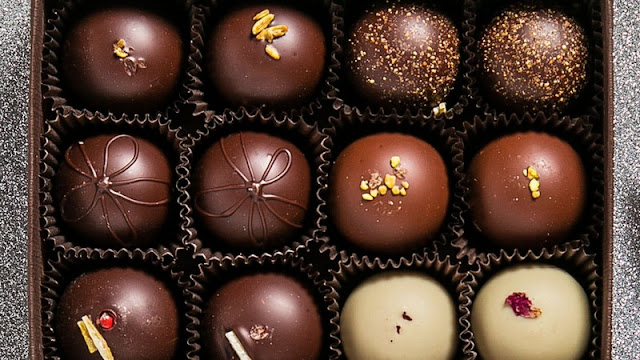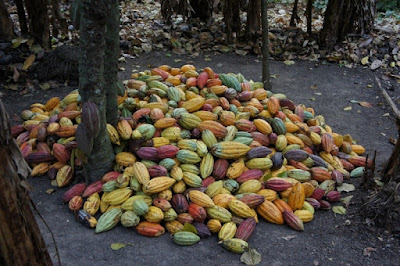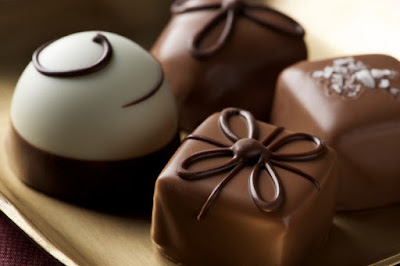The story begins about two millennia in tropical forests of the Americas. Although cocoa has been around for some time, the natives had never used the beans inside the pods of food. To find that the seeds can be processed and used as a drink, he quickly caught up with these primitive peoples. The first people known to make chocolate from cocoa beans were the ancient cultures of Central America and Mexico. The Olmec Indians are considered the first culture to cultivate beans as national culture, between 1500 and 400 BC From 250-900 C. E., bean consumption was limited to the elite of Mayan culture class. Over the years, the drink was consumed without sugar. Apparently, the Mayan people valued the beans so hard he planted in their garden staff so that they have easy access to them.
Around 600, the Mayas migrated to the northern regions of South America and began the recorded earlier cocoa plantations in the Yucatan. They used to drink than they did in engagement and wedding ceremonies. Once the Aztec culture was able to get away with a little grain and learn to drink them, they used them for medicinal purposes and in ceremonies such as weddings and religious rites. They believed that the beans were a gift from the gods. They are also the first culture known to tax the beans. His name for the drink they did was "xocolatl" translated into a hot drink or bitter. The first European to learn about chocolate was Christopher Columbus. He found a huge Mayan trading canoe piled high with precious beans. The most popular story of the introduction of chocolate in Europe is that credits Dominican friars to take a delegation of Mayan nobles at the court of Prince Philip of Spain. As one of the many gifts presented to the noble prince, gave him several cocoa pots already treated, I am ready to drink. The Spanish did not, however, share this beloved drink to the rest of Europe for nearly a century!
Sometime during the 16th century, the Spaniards began to add flavourings such as vanilla and sugar cane for chocolate drinks. Thus, the sweet chocolate was invented. And recorded history shows that the popularity of the drink has increased to the point that regular shipments began from Veracruz, Mexico, in Seville, Spain, in 1582.
The files are not entirely clear on how chocolate was introduced in the rest of Europe. Members of the Jesuit Society were the main consumers of the drink and had become cocoa traders as well. A French Cardinal popularized the drink in France and when Louis XIV married Maria Theresa of Spain in 1615, her chocolate lover it was, started a custom that spread like wildfire among the French aristocracy.
The English were introduced in cocoa beans by British pirates who targeted the Spanish ships in the second half of the 1500s they saw no use for the strange appearance of the load and even burned several transfers primarily discovered that beans were good to go. It took about a century for the chocolate to start making his mark in British history. "Chocolate houses" began to sprout, the first to be opened by French in 1657. At that time, chocolate was 10-15 shillings per pound. During the 16th and 17th centuries, the demand for chocolate has become so great that the Mesoamerican cacao plantations slaves to plant, cultivate, harvest and process cocoa beans. It was then that slaves were transported from Africa to Ecuador, Venezuela, Paraguay and Brazil. In 1730, the price of cocoa has dropped to about $ 3 per pound. In 1732, a French inventor developed a table mill for grinding chocolate. In 1765, the Irish chocolate maker John Hanan imported cocoa beans from the West Indies to Massachusetts in the American colonies. He teamed with Dr James Baker. They built the first chocolate factory in the colonies and in 1780, the plant was producing the famous Baker chocolate, which is still widely used today.
Another revolution in production occurred in 1795 when Dr Joseph Fry of Bristol, England, using a steam engine to power the grinding stone used to make chocolate. This manufacturing process catapulted forward enormously.
The man who is considered the pioneer in the manufacture of Swiss chocolate, Francois Callier, opened the first Swiss chocolate factory in 1819. And in 1828, a Dutchman named Conrad Van Houten invented the cocoa press. His invention helped more by cutting the price of chocolate and improving the quality thereof oust cocoa butter, which makes the glass smooth consistency. In 1847, another innovation was made by Joseph Fry & Son when they discovered a way to add a little cocoa butter to the Dutch chocolate, add sugar and make a paste that can be shaped in a bar. The modern chocolate bar was born. Dr Fry and his son joined with Cadbury Brothers displayed chocolates for eating at an exhibition in Birmingham, England, in 1849. In 1851, Americans got their first taste of candy, chocolate creams, caramels and "candy" (sweets) to Prince Albert Exhibition in London.
In 1861, Richard Cadbury created the first known heart of shaped box for Valentine's Day, and seven years later, in 1868, John Cadbury mass produced and marketed the first boxes of chocolate candies. In 1876, Daniel Peter of Switzerland introduced chocolate milk to drink - a project he worked for eight years before he perfected. Also in 1879, Rodolphe Lindt of Berne, Switzerland has invented the new machine that heats and rolled the chocolate to refine it. The process was called "conching". After the chocolate was "conch" seventy-two hours and cocoa butter are added to this product was very smooth and creamy and could be turned into tasty comes. Lindt chocolates are still known and widely acclaimed in the world today.
Here's another little tidbit of history of chocolate ... chewing on the chocolatier accredited with bringing mass production for the chocolate manufacturing industry is Milton Hershey in Pennsylvania, United States. Mr Hershey was nicknamed "Henry Ford of chocolate."
The same year, the US Congress adopted a formal ban on cocoa which proved to be produced using slave labour. The same year as chocolatiers collected in its formal protest against the cruelty found on cocoa plantations, a Canadian named Arthur Garong introduced the first nickel chocolate bar.
In 1913, Swiss chocolate Jules Séchaud gave the chocolate industry a machine process for hollow chocolate shells filled. Then in 1926, Joseph Sheets, a Belgian chocolate, opened the doors of Godiva chocolates.
Today, most cocoa is grown and harvested by hand. But gone are the days when cruel plantation owners used slave labour to meet the needs in the world for chocolate. Today cocoa is produced by independent producers or cooperative groups worldwide.
While there are companies that make chocolates handmade, most of the production is done by machines. It is more profitable and allows companies to sell their products cheaper than those that manufacture their products.
Even today there are still some cultures that believe that chocolate is being used as a form of currency and for medicinal and religious purposes. In fact, the cocoa bean has a chemical called theobromine, which is used to treat high blood pressure because it widens the blood vessels.




0 komentar